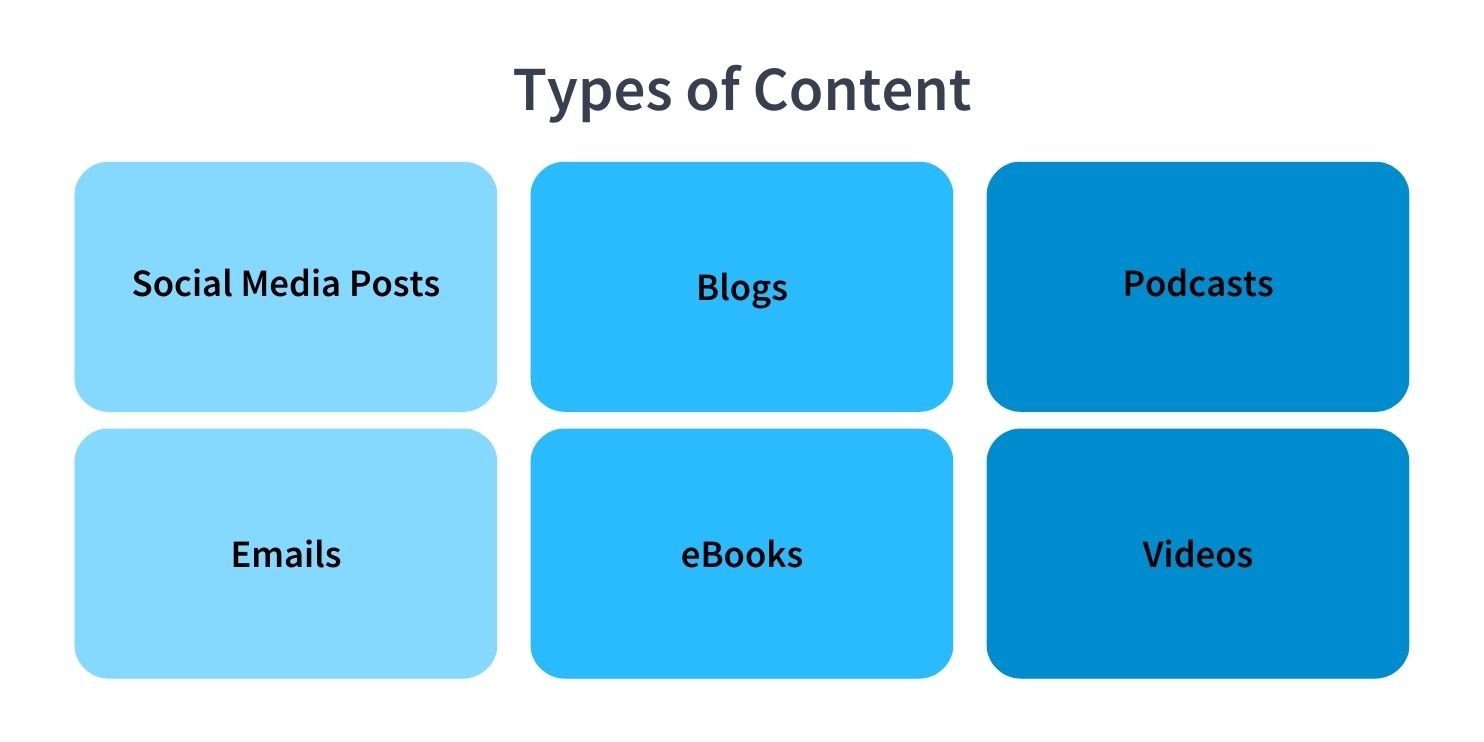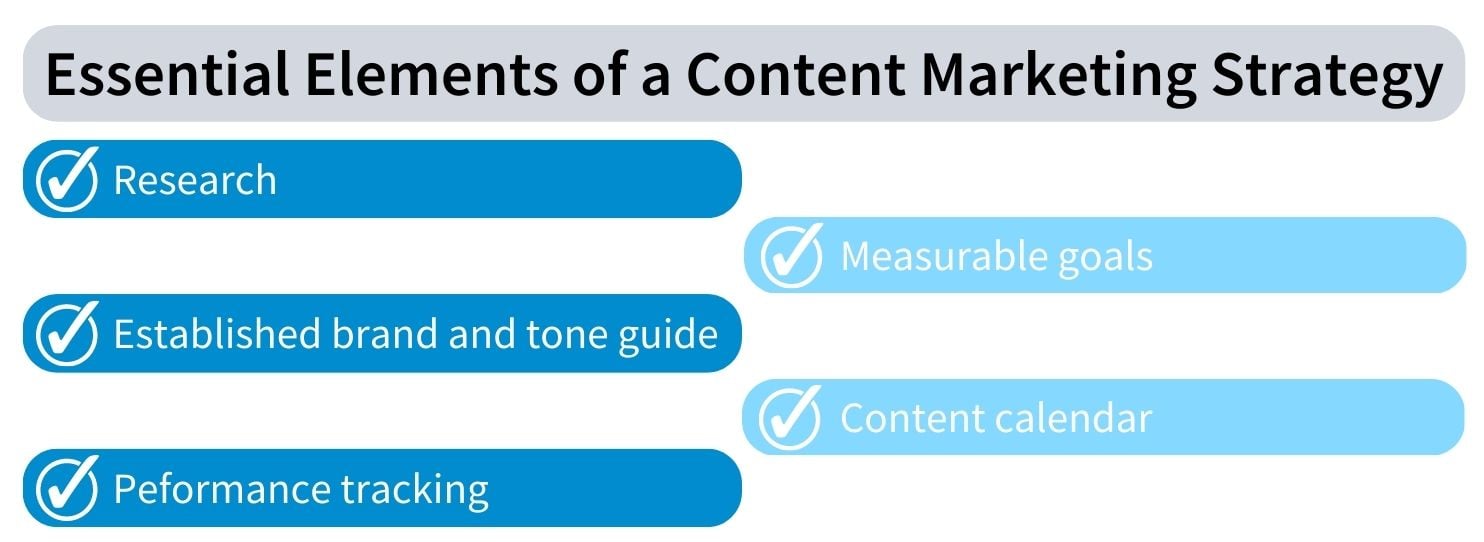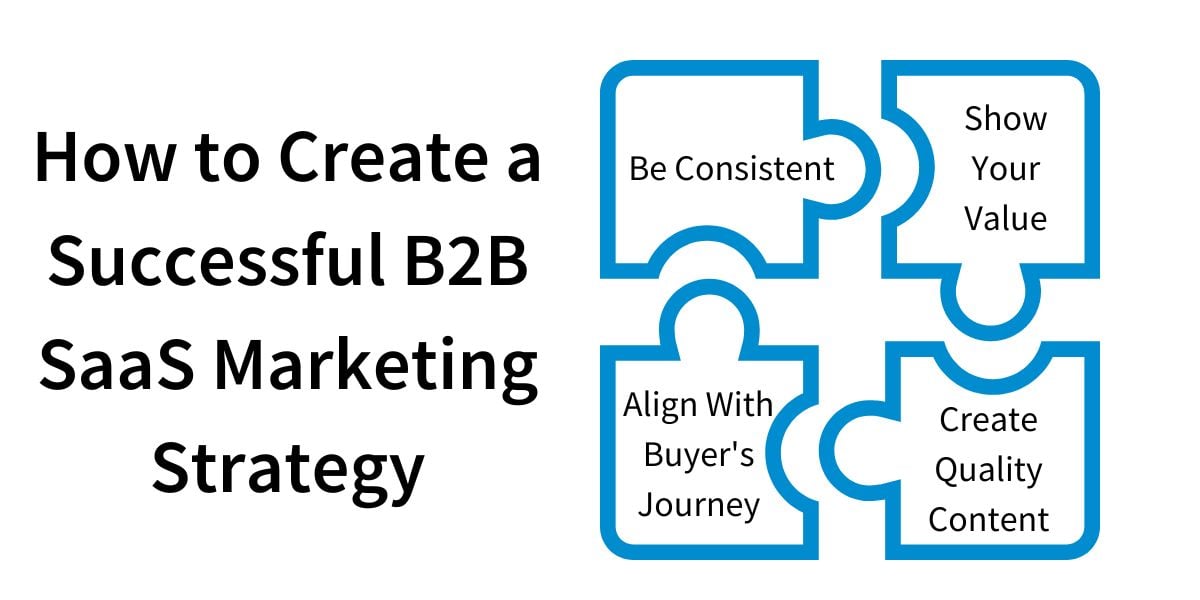For business-to-business (B2B) Software as a Service (SaaS) companies, content marketing can make or break their success. Creating SaaS content is necessary to show customers who your company is and what you have to offer. But not doing it correctly can either make it harder for customers to find you, or worse, drive customers to use your competitors’ solutions instead.
To help you attract customers, we’ve created this guide to teach you what a B2B SaaS content marketing strategy is and how to create and implement one successfully.
What Is B2B Content Marketing in SaaS?
B2B SaaS content marketing is an advertising method used by Software as a Service companies who sell to other businesses to write, publish, and promote content. The goal of this approach is to:
- Increase customer awareness about what your business is and what you have to offer.
- Educate readers on solving their problems as they relate to your industry.
- Drive sales, both for new and existing customers.
- Retain customers and promote upsells.
When considering what kinds of content to create for your marketing plan, you have several options to choose from.
Social Media and Emails
For example, creating social media posts or emails is a great way to remind prospective and current customers who you are and what you can do for them. Both of these options also work well for promoting other content or informing your customers of new deals or offerings you have.
Blogs and eBooks
Blogs work well for answering your target audience’s questions and teaching them about something. If you want to go a more formal route in educating your customers, an eBook is a great option. These can be longer and more technical than blogs usually are. They also work well as gated content so that you can gather prospective customers’ contact information and send them related emails.
Podcasts and Videos
Podcasts and videos are also great options for content. According to B2B content marketing statistics from Demand Sage, 383.7 million people across the globe listen to podcasts, with over 100 million of them located in the U.S. As for video, 3.1 billion people across the globe watch digital videos, which is why 92% of marketers say it’s a very important part of their marketing strategy. Taking advantage of these two forms of content can spread the word about your company and even generate more leads.

Why Is SaaS Content Marketing Important for B2B?
SaaS content marketing is important for B2B companies because it grows your customer base and, subsequently, your revenue. Plus, there are a lot of people involved in the decision-making process of a business as opposed to an individual consumer making a decision. In fact, according to one Gartner study, there are usually 6-10 people involved in the decision-making process. That means your content needs to show business leaders that your solution is worth investing in and can make processes easier for their employees which, in turn, creates happier customers.
What sets B2B SaaS content marketing apart, too, is that value needs to be proved to customers over and over again, even customers you’ve already won over. That’s because SaaS products or services are typically subscription-based, which means you need to prove to customers that your solution is worth paying for regularly. Having an effective content marketing strategy in place can prove that value to your customers.
What Is a Content Marketing Strategy?
A content marketing strategy is your plan for creating and publishing the content you create. While it sounds similar to content marketing, the two differ in that content marketing focuses on what you’re doing (writing, publishing, and promoting content) whereas a content marketing strategy describes how you’re going to do it. To create your content marketing strategy framework, you’ll need to determine:
- Who your target audience is
- What you can do to solve their’ pain points
- When you want to write and publish all your content by
- Where you’re going to publish and promote your content
- Why customers should choose you over a competitor
- What your goals are and how you’re going to accomplish them
Figuring out these points will guide your content creation so that you know how everything should connect with each other and what each piece of content should do to bring you the most success. Having a content marketing strategy in place that is proven to drive results will also bring more business to your company. There are many types of content marketing strategies out there, but the one that works the best for getting content to page one of search engines is Pillar-Based Marketing (PBM).
PBM is the practice of creating at least 16 pieces of content around a general topic of your choosing. This content includes:
- 1 Pillar: a 3,000-word article that includes 20 keywords and gives a broad overview on a topic.
- 3 Sub-Pillars: 2,000-word articles with 15 keywords and that give slightly more specific information on related topics and links to the pillar.
- 12 Supporting Blogs: 750-word articles with 8 keywords and that answer a specific question. These should link to the pillar and the related sub-pillar if there is one.
Building a network of content like this will show your customers that you’re an authority on the topic you choose to write about. That’s because the linking strategy shows search engines (and customers) that your pillar and sub-pillars are being referred to as a relevant source in each of your smaller pieces of content.
On top of using this strategy, including several other essential elements in your SaaS content marketing strategy will help you see real results.
What Are the 5 Essential Elements of a Content Marketing Strategy?
For an effective content marketing strategy, you will need to include these elements in your plan:
- Research. For your content marketing strategy to work, it needs to be well-informed. You should first start by researching your target audience. Figure out what language they typically use, what problems they need solved, and what their role is within their industry. Keyword research can help with figuring out what type of language your audience uses. A tool like DemandJump can show you relevant keywords and questions surrounding a topic.
From there, look into your competitors. Look at how they market their solutions and what features they offer. Finding these details out will help you identify a way to stand apart from the competition and win over the audience you’re both fighting for.
- Measurable goals. To see how successful your strategy is, you’ll have to set goals before you begin. They should be SMART (specific, measurable, achievable, realistic, and timely) to reach them. There are several key metrics that you can use to track your success, something we’ll discuss later.
- Established brand and tone guide. When showing your customers who your company is and what you stand for, it’s important to have a brand and tone guide that your writers can refer to throughout their creative process. This will ensure that all of your content matches in voice and structure.
- Content calendar. Having a set schedule for your content will tell writers when they need to finish their writing and editing processes and your project manager when to publish everything to drive the most results. We recommend that you publish all content surrounding each of your SaaS blog topics within weeks of each other to better establish your company as an authority on the topic.
- Performance tracking. Once you publish all the content from your strategy, keep track of how it’s performing. Take note of what is working well and what isn’t so that you know which changes to make in the future and which practices or methods to keep the same.

You need the above elements to create a SaaS content marketing strategy. However, you will also have to use other content marketing fundamentals to see success in the B2B SaaS world.
What Is Needed To Be Successful in B2B Marketing in the SaaS Space?
To be successful in B2B marketing in the SaaS space, you will need to:
- Be consistent. The end of one B2B content marketing strategy does not mean a break from content creation for a while. You should regularly create content so that your target audience can find you more easily on searches. If your team reaches a busy season where creating new content may be a challenge, consider focusing on social media or email campaigns. You could also convert eBooks to shorter blogs or blogs into how-to videos so that you have new content to share without having to start from scratch.
- Show your value. Most people who go online to find a solution to their problem don’t want to be sold to—at least not immediately. They want an answer. Keep this in mind when creating your content. First and foremost, you should answer your audience’s questions. You can mention solutions that your software offers, but don’t make the whole piece about why they should subscribe to it. Save the salesy information for your call to action at the end of your content. That way you show your audience that you know your stuff first, and then you can prompt them to take action once they begin to trust you a bit more.
- Align your content with the buyer’s journey. Those who visit your website or view your content will be at different stages within the buyer journey. There are three main stages of the journey and a fourth important stage for after your reader becomes a customer. They are:
- Awareness: Prospective customers start looking for solutions to their problems and discover your company.
- Consideration: These prospective customers begin to look into a bit more detail about different solutions and start to compare benefits and features of each.
- Purchase: Your target audience becomes buying customers.
- Retention: For a SaaS company, you have to continue to market to current customers to make sure they see the value in your product and keep their subscription with you.
When creating your content, make sure to develop some for each of these stages of the buyer’s journey. That way you can better attract prospective customers no matter what stage they’re in.
- Create quality content. It isn’t enough to merely produce content. You must also make sure that your readers or viewers can digest it. On top of answering readers’ questions, you should also use language that readers can understand. Avoid jargon that will make your content confusing to those who don’t know all the terms from your industry. Also, break up content into chunks so that it’s easier for readers to read, especially if they’re reading it on their phones. Using bullet points and images can help with that. Include transitions to improve flow throughout your piece.

To track the success of your marketing campaign, look at specific metrics that indicate how your content is performing.
What Are the Top 5 Key SaaS Marketing Metrics to Track?
To track the success of your SaaS content marketing campaigns, consider using these metrics. While all of these have to do with sales and costs of gaining a customer, they relate to content marketing because your marketing strategy will drive new customers to use your products. Content marketing also boosts organic traffic, which can make acquiring new customers less expensive.
- Churn rate: Measures how many customers stop subscribing to your services. To calculate it, use this equation:
churn rate = (customers at the beginning of the month - customers at the end of the month) / customers at the beginning of the month
- Net revenue retention (NRR): Measures the amount of recurring revenue retained from your customers over a set period of time, such as a month or a year. To calculate it, add the total amount of money you had at the beginning of your time period [either annual revenue retention (ARR) or monthly revenue retention (MRR)] to the amount you earned from expansions and upsells, then subtract by the amount lost from churn and contractions. Divide that total by the total you started with at the beginning of the time period.
NRR = (ARR or MRR + Expansions + Upsells - Churn - Contractions) / ARR or MRR
- Customer acquisition cost (CAC): Measures how much your company spends to acquire new customers. To calculate it, use this equation:
CAC = (cost of sales + cost of marketing) / number of new customers acquired
- Customer lifetime value (CLV): Measures how much money your company can expect to receive from a customer while they remain your customer. To calculate it, use this equation:
CLV = (average value of sale x number of transactions x retention time period) x profit margin
- Lead conversion rate: Measures the proportion of qualified leads that turn into sales. To find this value as a percentage, use the following equation:
lead conversion rate = (number of qualified leads that result in sales / number of qualified leads) x 100
Find B2B Content Ideas Using DemandJump
If you’re looking to either improve your B2B SaaS content marketing strategy or create a brand new B2B content marketing strategy in 2023, let DemandJump help. Not only will our platform create a Pillar-Based Marketing strategy for you to use, but it will also show you what keywords and questions to include in your content. This leads to higher rank on search engines and better lead generation. We also offer Pillar-Based Marketing courses in DemandJump University so that you know exactly how to take advantage of this strategy.
What are you waiting for? Start seeing results from your B2B SaaS content marketing campaign by using DemandJump.












